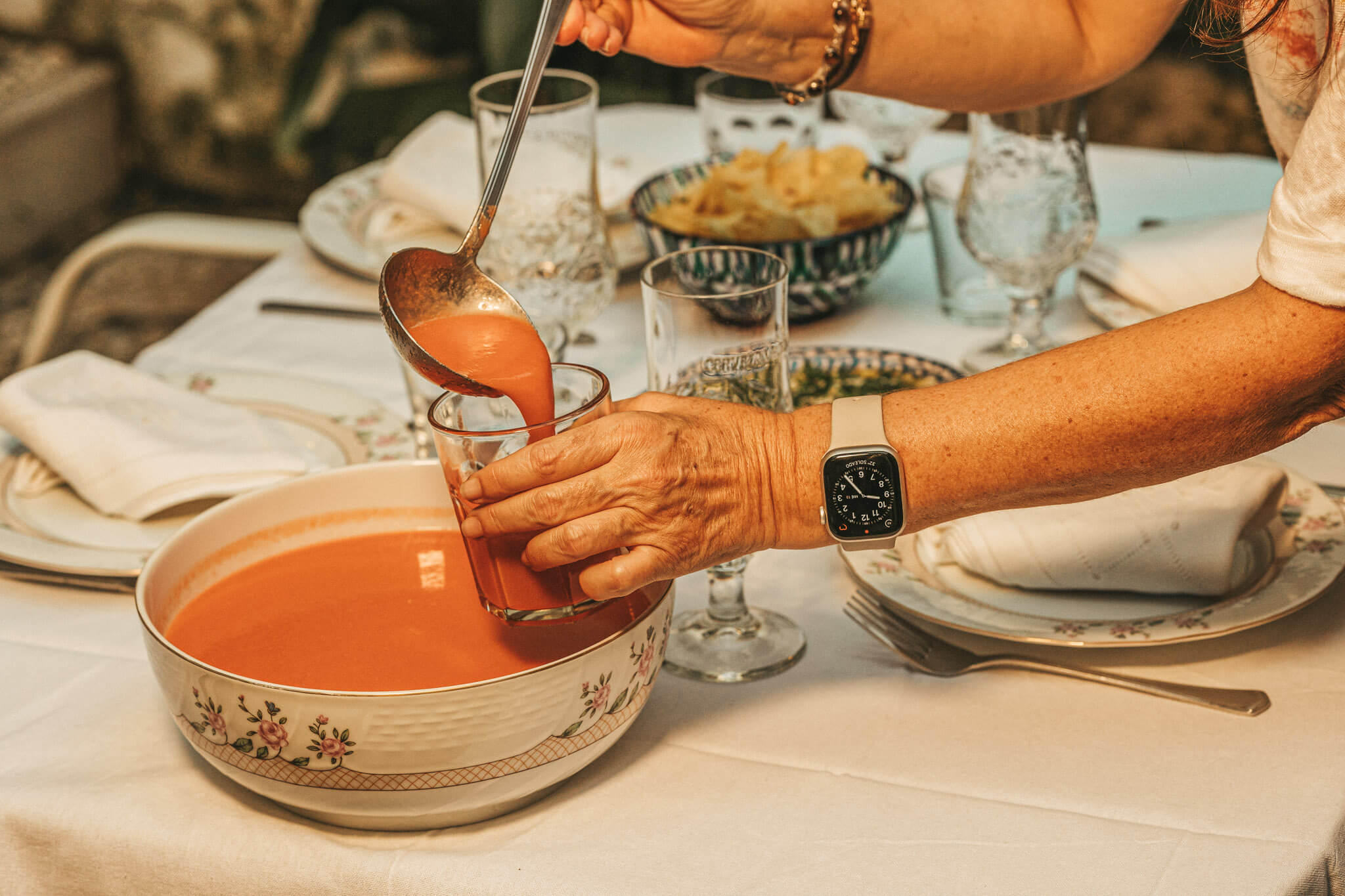Are you planning a trip to Spain this summer? You might want to explore Seville’s historic streets or soak up the sun on Málaga’s golden beaches. Moreover, don’t miss the chance to delve into Granada’s rich culture and Spain’s vibrant culinary scene. And when the summer heat rises, nothing beats the refreshing flavors of Spanish cold soups. These light, flavorful dishes have been perfected over centuries, offering visitors a taste of tradition, culture, and fresh ingredients. Here’s a closer look at four must-try Spanish soups for summer. Additionally, locals who have crafted these dishes for generations highly recommend each one.
Gazpacho: A Seville Classic
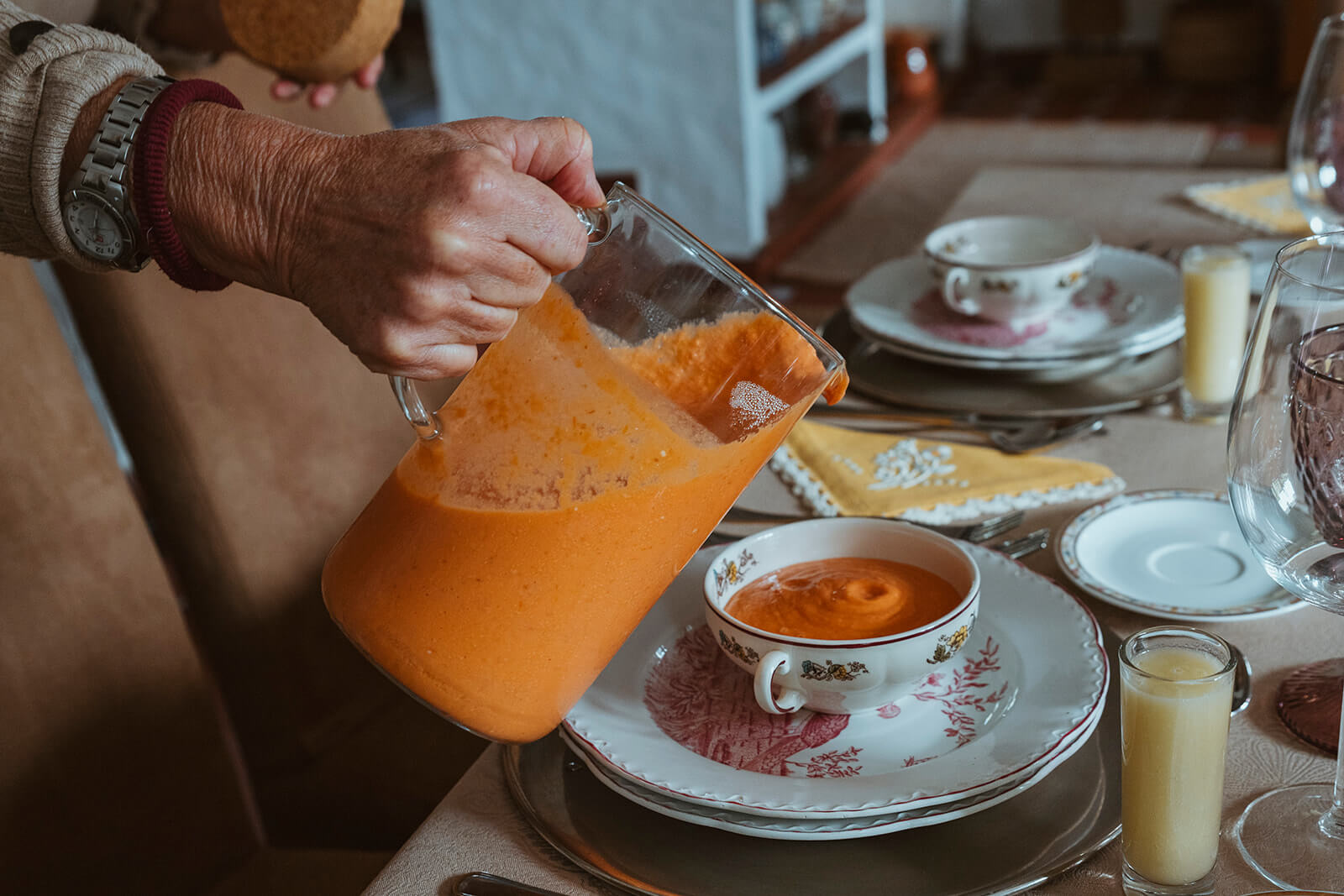
Let’s start with the king of Spanish cold soups, Gazpacho. Known far beyond Spain’s borders, Gazpacho is a vibrant, refreshing soup made primarily from tomatoes, cucumber, garlic, and olive oil. What makes Gazpacho truly special is how it captures the essence of the Mediterranean summer: light, tangy, and packed with garden-fresh ingredients.
But did you know that Gazpacho dates back to Roman times? Originally, people made it with stale bread, garlic, olive oil, and vinegar. Over centuries, it evolved to include tomatoes and other vegetables when Europeans introduced them. Today, Gazpacho is an essential part of Andalusian cuisine, and in the sweltering summer months, it becomes a daily staple for many Spaniards.
Elena, a lifelong cook, makes authentic Gazpacho using organic tomatoes harvested from her family’s small garden just outside the city. She swears by her secret ingredient: a splash of extra sherry vinegar, which adds just the right amount of tanginess. When you sit down with Elena to try her Gazpacho, you’ll taste the dish firsthand. Moreover, you will feel a deep connection to Andalusia’s culinary traditions.
Beyond the soup itself, Gazpacho is a versatile dish. Elena suggests serving it in a glass as a drinkable soup. Additionally, this way of enjoying Gazpacho is becoming more popular at tapas bars across Spain. It’s a perfect light appetizer or a refreshing drink between meals.
Salmorejo: Salmorejo’s Creamy Delight
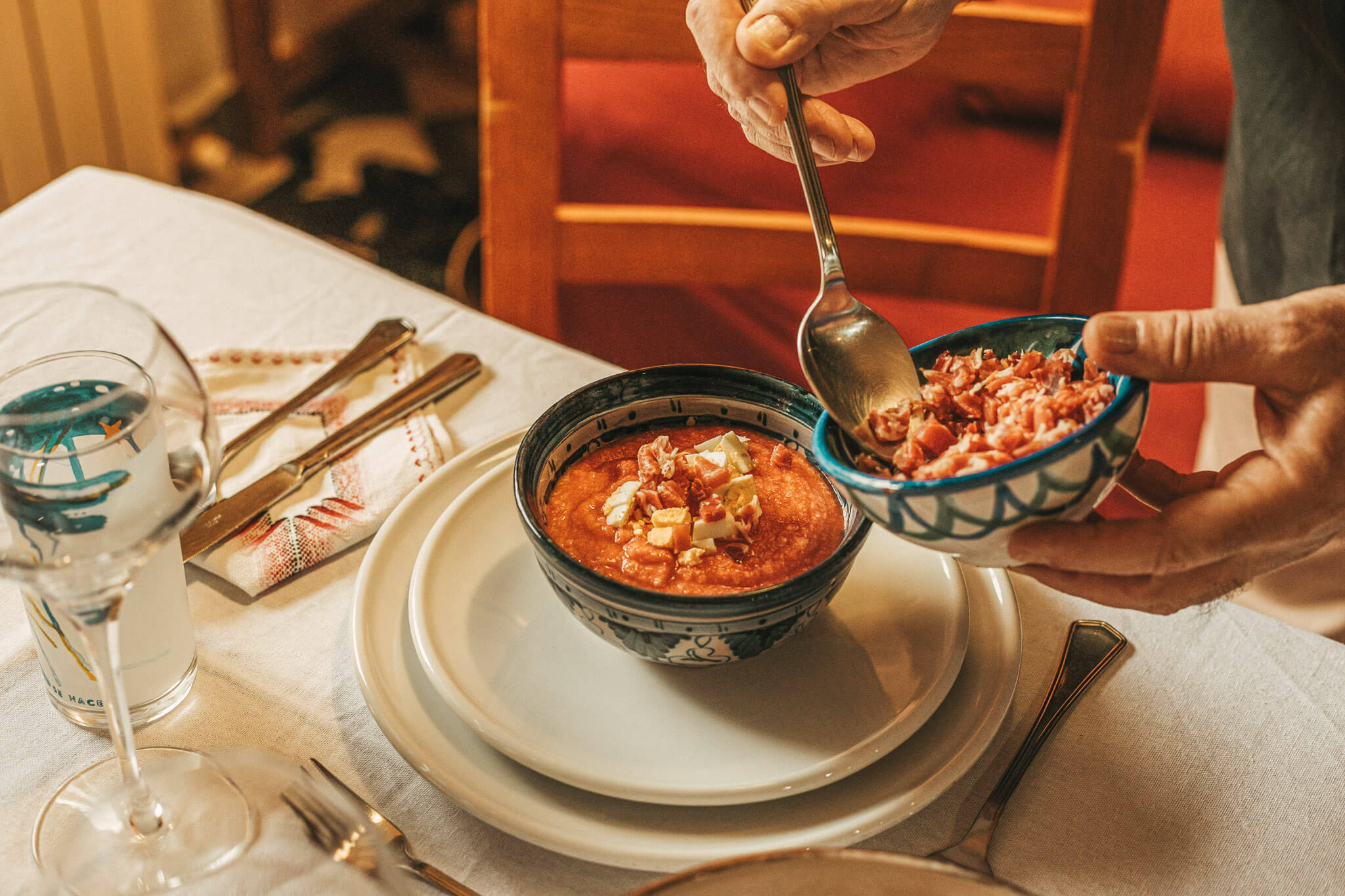
While Gazpacho is Spain’s most famous cold soup, Salmorejo is its rich and indulgent cousin from Andalucia. Thicker and creamier than Gazpacho, Salmorejo has its own devoted following, and it’s easy to see why. Made with a blend of ripe tomatoes, bread, garlic, and olive oil, Salmorejo is luxuriously smooth and topped with savory additions like diced hard-boiled eggs and Spanish cured ham (jamón).
Salmorejo’s secret lies in its simplicity. The quality of the ingredients makes all the difference, and Javier, a Granada native, uses only the best. He incorporates freshly baked local bread, which gives the soup its signature creamy texture. The finishing touch? A drizzle of Granada’s finest extra virgin olive oil, known for its robust and slightly peppery flavor.
What makes Salmorejo even more fascinating is its history. This dish originated in humble kitchens, where families would use leftover bread to create a hearty, filling meal. Over time, it became a staple in Andalucia, and now it’s considered a must-try for any food lover visiting the region.
For a unique twist, Javier likes to serve her Salmorejo with a side of fried eggplant drizzled with honey, adding a sweet and salty contrast to the dish. The combination of these two Andalusian classics is a culinary experience you won’t soon forget.
Porra de Antequera: Málaga’s Hidden Gem

If you’re searching for a dish that’s a true hidden gem of Spanish cuisine, look no further than Porra de Antequera. This lesser-known but equally delicious soup hails from the town of Antequera in Málaga and is often considered a heartier version of Salmorejo. Made with the same base ingredients—tomatoes, bread, garlic, and olive oil—Porra de Antequera is thicker and more filling, often served as a dip with crusty bread or as a starter before a meal.
Alicia, an andalucian native, has been making Porra de Antequera for over 30 years, using a recipe passed down through her family. She adds a touch of cumin to the mix, giving the dish a slightly spicy, earthy flavor that sets it apart from other cold soups for summer. The use of locally sourced olive oil, grown in the ancient olive groves surrounding Antequera, adds an authentic depth of flavor that can’t be replicated.
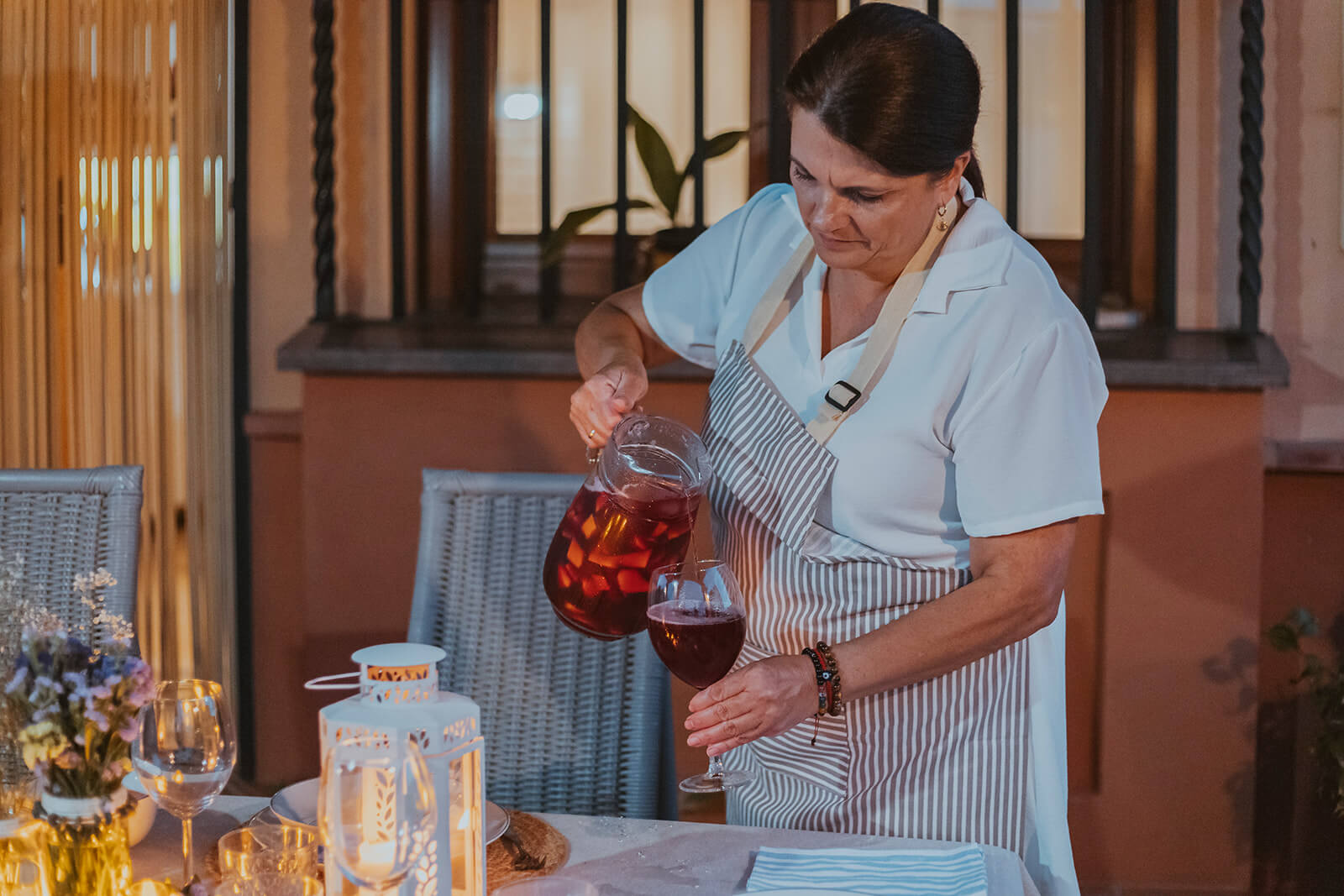
The name ‘porra’ actually refers to a type of club or stick. Traditionally, people use it to mash the ingredients together in the soup’s preparation. Today, modern blenders have replaced the stick. Nevertheless, the essence of this dish remains the same: a rich, thick, and satisfying soup perfect for summer.
When visiting Antequera, a town known for its stunning rock formations and prehistoric dolmens, be sure to stop by Alicias’s kitchen to enjoy a bowl of Porra de Antequera. It’s the perfect dish to enjoy after a day of exploring Málaga.
Ajo Blanco: The Almond Soup
If you’re craving something a little different, Ajo Blanco is the perfect choice. Often referred to as “white Gazpacho,” this almond-based cold soup offers a refreshing alternative to the tomato-heavy dishes we’ve explored so far. Made from almonds, garlic, bread, and olive oil, Ajo Blanco has a smooth, velvety texture and a delicate, nutty flavor that’s unlike anything else in Spanish cuisine.

Mária, a Cádiz local, prepares Ajo Blanco using almonds grown in the region’s sun-soaked orchards. The dish is often served with grapes or melon, which adds a touch of sweetness that perfectly complements the savory flavors of the soup.
The origins of Ajo Blanco date back to Moorish times when almonds were a key ingredient in Andalusian cooking. Today, the dish remains a popular summer staple in Málaga and throughout southern Spain. Its cool, creamy texture makes it the perfect antidote to Spain’s intense summer heat.
In addition to its historical roots, Ajo Blanco is also incredibly nutritious. Almonds are packed with healthy fats, fiber, and protein, making this soup both a refreshing and wholesome option. If you’re looking for a dish that’s light yet satisfying, Ajo Blanco should be at the top of your list.
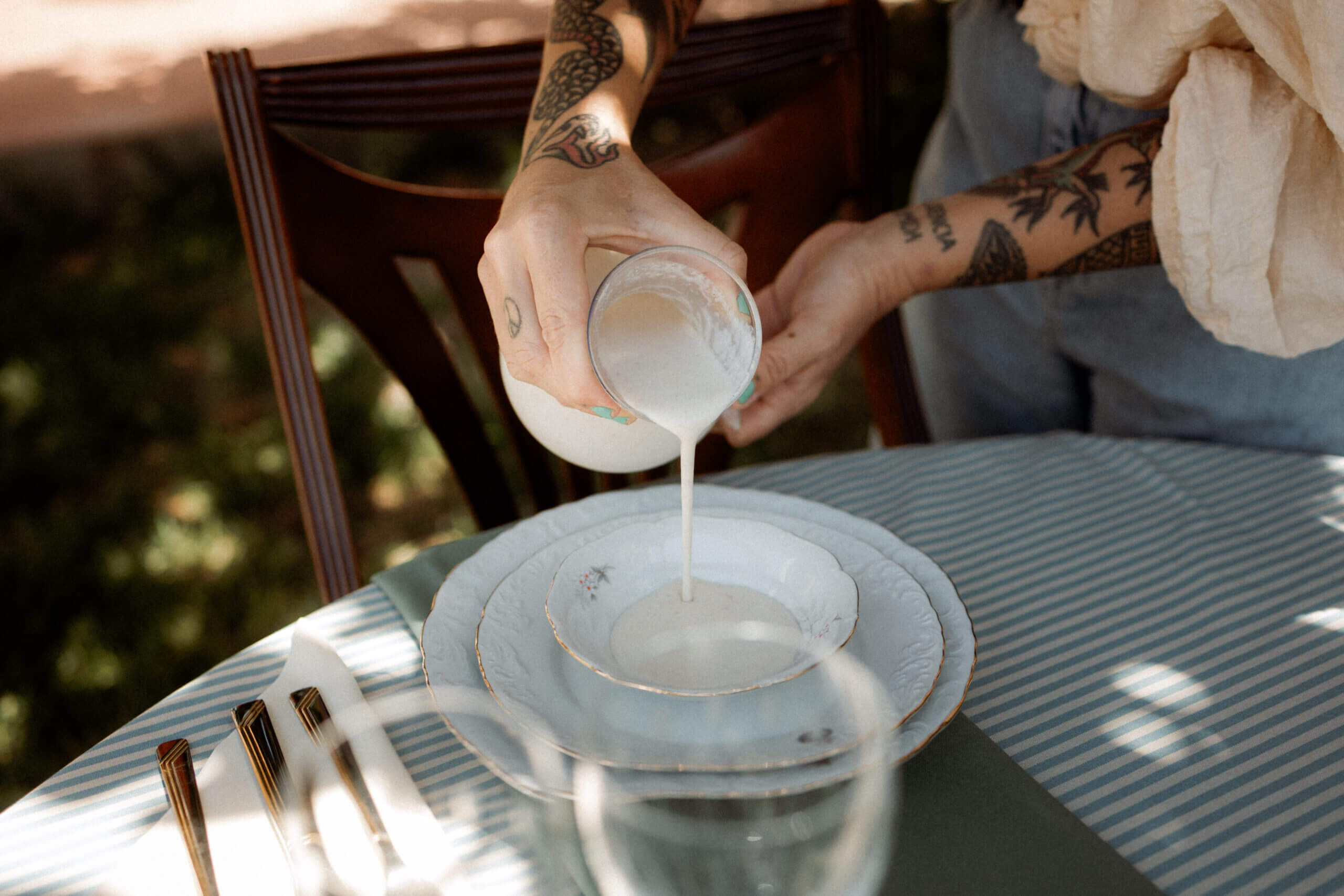
These Spanish cold soups are more than just meals; they are windows into Spain’s rich culinary traditions. What sets these dishes apart is the passion and expertise of the locals who prepare them. So, if you’re wondering what to eat in Spain during the summer, look no further than these must-try Spanish summer dishes. Let locals guide you through the flavors of their homeland, one bowl at a time. Whether you’re visiting Spain or recreating these dishes at home, these cold soups will transport you to the heart of Andalusia.
Visit SAZON THE FOLK COOK to discover all the authentic Spanish menus prepared by locals, and experience these refreshing soups and more firsthand. Whether you’re planning your trip to Spain or want to recreate the flavors at home, you will find inspiration here. Meanwhile, our hosts are eager to share their time-honored recipes with you.

